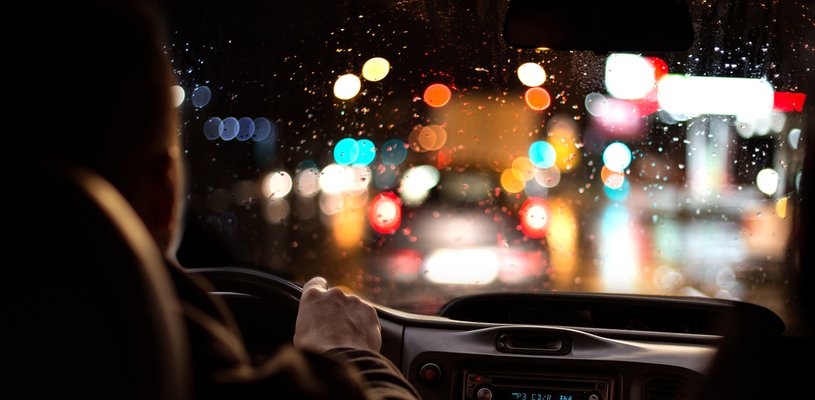
Driving in the dark can often be a little daunting, with some streets dimming street lights after a certain hour, and some drivers taking more risks on darker roads. There’s nothing quite like having someone else’s high beams dazzling your eyes, but beyond the things that cause perpetual annoyance, few realise how dangerous driving at night can actually be.
The chance of fatalities on the road are three times greater at night than during the day, and only a quarter of driving is done at night - which puts you at a much greater risk, with half of all driving deaths occurring in the dark.
Depth perception, the ability to distinguish colour, and peripheral vision are all worsened in dim conditions, with drivers tending to be more tired at night. With low beams only illuminating the road from 160 to 250 feet in front of your vehicle, and normal high beams illuminating from about 350 to 500 feet, even with high beams on, there’s not a lot of room for error when you’re driving in the dark.
Keeping your wits about you is essential when you’re travelling in the dark - so check out our top ten tips for late night driving below.
Keep your distance
While it’s never a good idea to follow too closely to cars in front of you, this is even more important when you’re driving in the dark. Driving too close to those in front of you can make other drivers nervous, which makes those on the road around you more likely to react badly or lose concentration. The closer you are to the vehicle in front of you, the brighter your headlights seem and this may cause distractions, as you are limiting the driver’s visibility.
When you’re closer to a car in front of you in the daylight, it’s easier to make judgments as to when you need to break, as you can see more clearly. However, during the dark, your visibility in front of your car is lessened. With limited sight distance, you’re setting yourself up to have problems if you’re driving close to someone in front of you.
Adjust your headlights
When you purchase a new car, sometimes you can find that headlights are uneven, or pointed lower than necessary. If you’re adjusting your headlights yourself, there should be instructions in your owner’s manual as to how you can alter them to ensure they’re not blinding oncoming traffic. Even lights that are in the correct place can cast a dim glow if something is blocking the light, like dirt or road grime. You should ensure you keep these clear, to make sure they’re shining correctly. If you have an older car with plastic lens covers, these may become yellow or faded over the years - the best way to fix these is to buy a headlight polish kit to remove the dimness from the headlights.
Keep your eyes off oncoming lights
Bright lights can seriously disrupt your concentration at night. When you’re driving, your eyes are used to the dim glow of the dashboard, and the dark road ahead, However, when a car comes in the opposite direction, your eyes can become blinded by the lights. Therefore, when driving in the dark, turn your gaze away from other bright lights on the road, and don’t stare directly at oncoming car lights.
It’s courtesy to switch off your high beams when a car is coming in the opposite direction, although sometimes other drivers may forget. When this is the case, ensure you turn your gaze away and keep your eyes out of the light. If someone behind you has their high beams on, you can move your rearview mirror to reflect light backward to ensure you’re not being blinded from all directions.
Make use of your fog lights
Fog lights, as the name implies, help drivers see the road when the weather conditions are not ideal. Rather than simply ‘lighting up’ fog with car light beams, fog lights are aimed as low as possible on a car, because fog itself tends to hang no lower than a couple of feet above the road. Therefore, if a fog light is aimed too high, it will produce glare in the fog and blind oncoming drivers.
However, you can always use fogs lights when it’s not foggy, as they spread wider than typical low beans - so you can see farther beyond the road’s shoulder. Therefore, when you’re driving in the dark and have limited accessibility in using your high beams, fog lights can be beneficial to aid your vision. However, remember that fog lights placed low on a car will create large shadows, something to be mindful of when you’re driving using your fog lights.
Clean and adjust your mirrors and windscreen
Dirty mirrors and windscreens reflect the lights of cars behind you in diffused shapes and can produce a harsh glare, so ensure you keep them clean and wiped down to avoid a visual impairment. Also, ensure you aim your exterior mirrors downward, so you can move your head out of the path of lights reflected within them. That way, you can see cars behind by moving your head slightly forward, without other car’s headlights blinding you with their high beams. You can also switch your inside rear-view mirror to the Night or Auto Dim setting, which darkens the mirror to prevent a glare.
Remain alert
The best way to stay in control at night is to keep checking your mirrors and watching for lights and movement. It is important to keep an eye out for other cars’ headlights, animals on the side of the road, or pedestrians. Stay alert by checking all your mirrors regularly, to ensure that you’re aware of what is occurring around you. At night it’s more about watching those around you, keeping an eye on other driver’s behaviour and staying alert to others behaviour on the road at night.
Keep an eye on the weather
When it’s raining outside, or there’s snow on the road, driving conditions tend to worsen. These issues are compounded when you’re trying to get to your destination in the dark, and there’s a gale force wind coming down, or there’s snow building up around you. The first thing to bear in mind would be if you don’t need to drive in this weather, don’t.
However, if you’re already on route when the snow’s coming down, or you desperately need to travel, then ensure you take note of the weather warnings on the roads you’re travelling on. Keep a larger distance between yourself and the car in front of you, to ensure that any sudden breaking or skidding on the road will be met with caution and a lower likelihood of hitting the cars around you. Also remember that those around you will probably be nervous on the road - so keep your speed down, keep your lights on low beam and your windows and mirrors clear.
When you’re driving at night, remember to stay safe, keep an eye out and always remain alert. Remember - if you’re feeling tired, or you’ve been driving for a few hours, ensure you take a break to refresh yourself and keep yourself alert.
Related: The Essential Car Maintenance Guide


